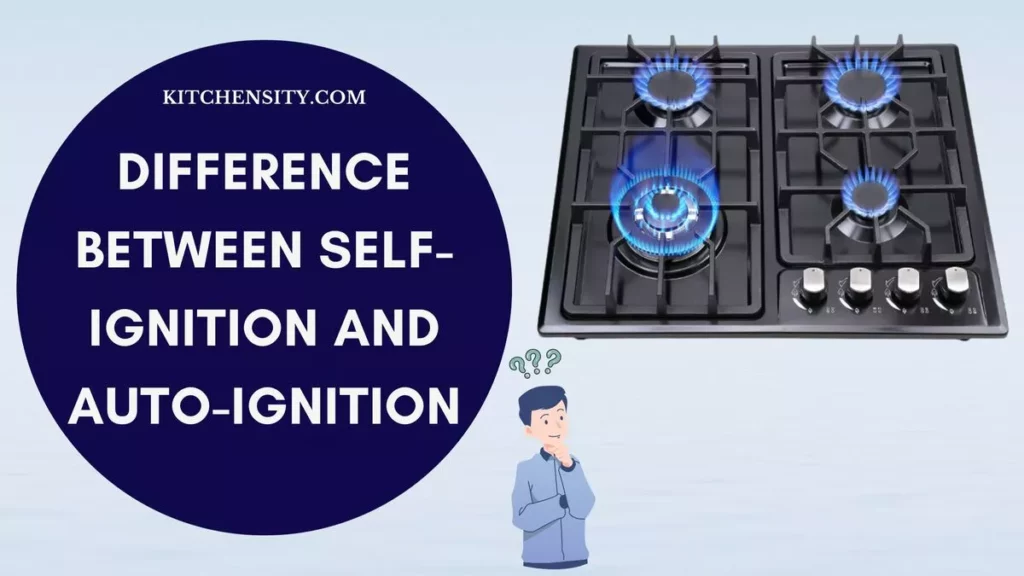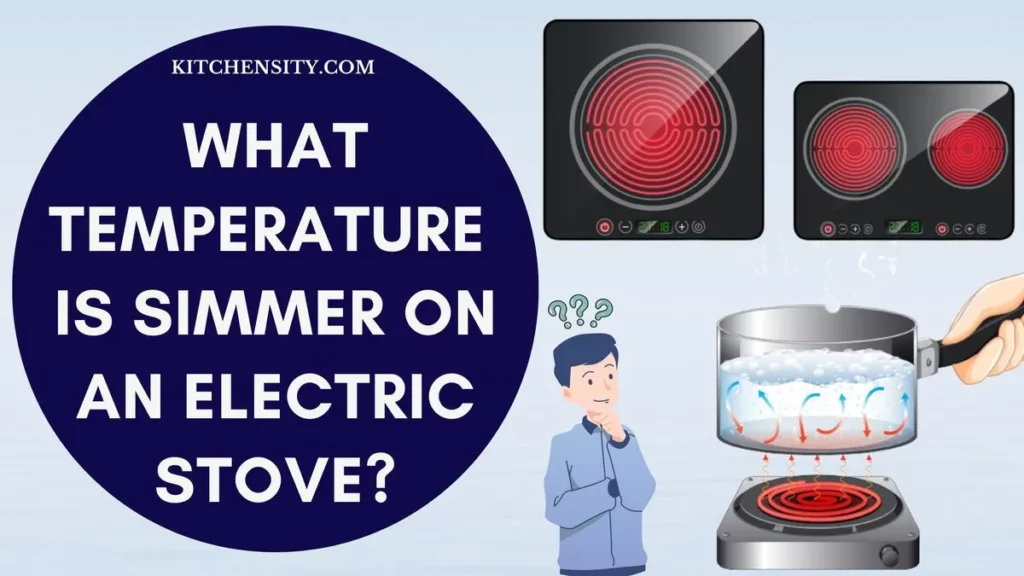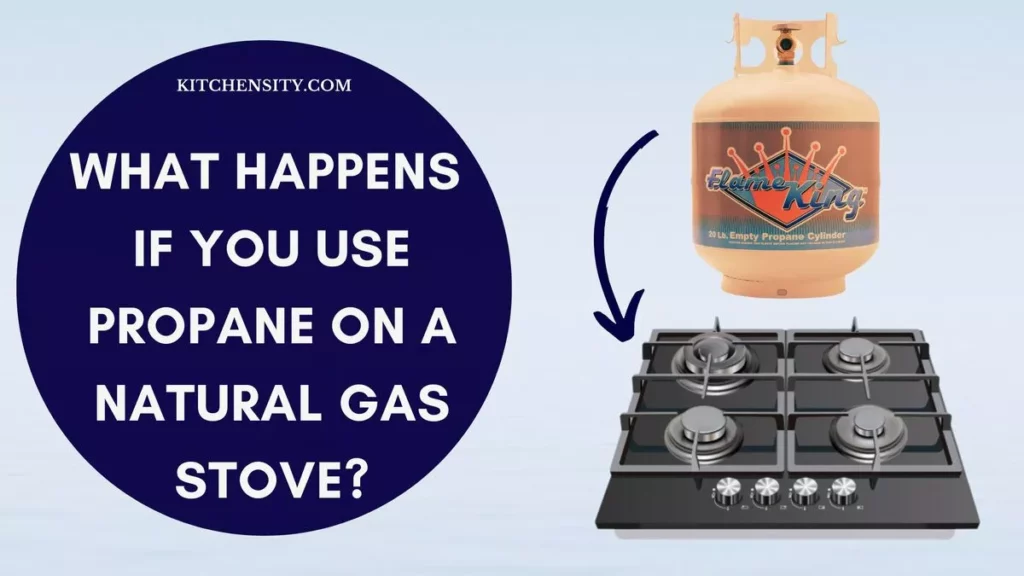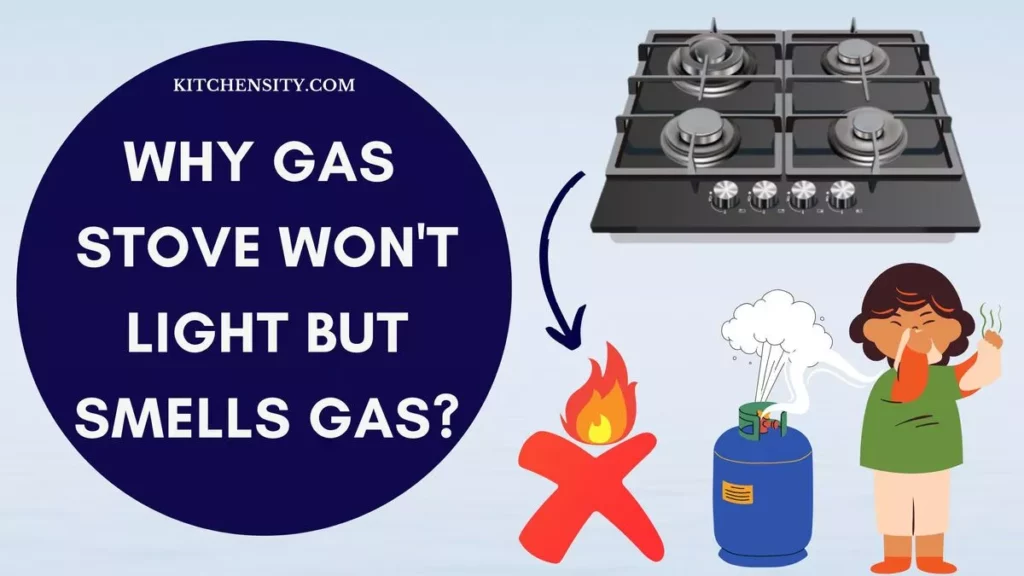In the world of combustion and ignition, two terms that often create confusion are self-ignition and auto-ignition. Both phenomena involve the ignition of a substance without an external flame or spark, but they occur under distinct circumstances and have varying implications.
Understanding the differences between self-ignition and auto-ignition is crucial, especially in industries where combustion processes are prevalent.

Table of Contents
- 1 What Is The Difference Between Self-Ignition And Auto-Ignition? Key Differences
- 2 What Is Auto-Ignition Temperature?
- 3 What Does Self-Ignition Mean?
- 4 Difference Between Self-Ignition And Auto-Ignition: A Comparative Analysis
- 5 Is Auto-Ignition The Same As Self-Ignition?
- 6 What Is The Point Of Auto-Ignition?
- 7 Does Auto Ignition Need Oxygen?
- 8 Does Auto Ignition Require Electricity?
- 9 What Is The Importance Of Auto-Ignition And Self-Ignition In Gas Stoves?
- 10 Final Thoughts: Difference Between Self-Ignition And Auto-Ignition
- 11 Frequently Asked Questions (FAQs)
- 11.1 What Is Self-Ignition, And How Does It Happen?
- 11.2 Can Materials Self-Ignite Without Any External Factors?
- 11.3 What Is Auto-Ignition, And Why Is It Important For Gas Stoves?
- 11.4 How Can Self-Ignition And Auto-Ignition Be Prevented In Everyday Life?
- 11.5 Why Is It Important For The General Public To Understand Self-Ignition And Auto-Ignition?
What Is The Difference Between Self-Ignition And Auto-Ignition? Key Differences
The primary difference between self-ignition and auto-ignition lies in the conditions that trigger them. Self-ignition is caused by internal chemical reactions within a substance, leading to a temperature increase and subsequent ignition. In contrast, auto-ignition occurs when a substance reaches its critical temperature, regardless of internal chemical processes.
Also, the auto-ignition temperature varies for different substances, making it a crucial factor in determining the risk of spontaneous ignition.
Here is a comparison table highlighting the differences between self-ignition and auto-ignition:
| Aspect | Self-Ignition | Auto-Ignition |
| Definition | Spontaneous ignition due to internal heat or reactions | Spontaneous ignition at a specific external temperature |
| Cause | Internal chemical reactions or heat generation | External heating, usually from a malfunction or leak |
| Occurrence | Internal factors within the material | External factors, such as gas leaks or overheating |
| Prevention | Proper handling and disposal of materials | Regular maintenance, proper ventilation, and gas leak checks |
| Examples | Spontaneous combustion of cooking oils | Gas leak leading to stove ignition |
Also Read – What Is An Auto-Ignition Gas Stove?
What Is Auto-Ignition Temperature?
Auto-ignition temperature, also known as spontaneous ignition temperature or ignition point, refers to the lowest temperature at which a substance can ignite spontaneously in the air without an external ignition source such as an open flame or spark. It is a crucial parameter in understanding the flammability and safety characteristics of various materials.
When a substance reaches its auto-ignition temperature, it undergoes a chemical reaction leading to ignition. This process occurs because the substance has absorbed enough heat energy from its surroundings to initiate combustion independently. Auto-ignition temperatures vary widely among different substances and materials, ranging from relatively low temperatures for highly flammable compounds to much higher temperatures for less volatile substances.
Knowing the auto-ignition temperature of a substance is vital in various industries, especially those involving combustible materials. It helps in designing equipment and processes that operate below the critical temperature, ensuring safety and preventing accidental ignition. Engineers and safety professionals use this information to establish appropriate operating conditions, implement safety protocols, and choose suitable materials for specific applications.
Also Read – What Is An Infrared Gas Stove?
Example Of Auto-Ignition
Gas stoves commonly use natural gas or propane as fuel sources. These gases have specific auto-ignition temperatures, which, if reached, can lead to spontaneous ignition without the need for a manual ignition source like a lighter or matchstick.
When you turn on the gas knob on a stove, the gas flows through the burner. Simultaneously, the stove has an ignition system, usually in the form of a small electric spark or a pilot light. The purpose of these ignition systems is to initiate the combustion process by providing the initial spark necessary to ignite the gas.
However, if there is a malfunction in the stove’s ignition system or if there’s a gas leak, the concentration of gas in the air around the stove can increase. If this concentrated gas mixture reaches the auto-ignition temperature of the specific gas being used (which is around 940°F or 510°C for natural gas and 920°F or 493°C for propane), it can spontaneously ignite, causing a dangerous situation.
In such cases, the gas ignites without any external flame or spark, leading to a sudden and unexpected fire. This is why it’s crucial to ensure the proper functioning of the ignition system and promptly address any gas leaks to prevent the gas mixture from reaching its auto-ignition temperature, thereby ensuring the safety of using gas stoves in homes and commercial settings.
Also Read – Butane Vs Propane Stove
What Does Self-Ignition Mean?
Self-ignition refers to the spontaneous ignition of a substance without the application of an external heat source, flame, or spark. It occurs when a material reaches a specific temperature due to internal chemical reactions, compression, or other forms of energy accumulation, leading to ignition without any external assistance.
In essence, self-ignition happens when a substance combusts on its own accord, without the need for an external ignition factor. This phenomenon is observed in various materials and contexts, highlighting the importance of understanding the conditions under which self-ignition can occur to prevent accidents and ensure safety in different industries.
Also Read – Brass Burners Vs Cast Iron Burners
Example Of Self-Ignition
An example related to stoves involves the phenomenon of self-ignition in cooking oils. When cooking oils, such as vegetable oil, are heated to high temperatures on a stove, they can undergo a process called auto-oxidation.
During this process, the oil reacts with oxygen in the air, creating heat. If the oil is left unattended on a hot stove and reaches its auto-ignition temperature (which is around 600°F or 315°C for most cooking oils), it can spontaneously catch fire without any external flame or spark.
This self-ignition can occur if the oil becomes overheated, leading to a dangerous situation in the kitchen. It is crucial for individuals cooking with oil on a stove to be aware of the oil’s smoke point and to avoid heating the oil beyond this temperature to prevent the risk of self-ignition and potential kitchen fires.
Also Read – Brass Burners Vs Stainless Steel Stove Burners
Difference Between Self-Ignition And Auto-Ignition: A Comparative Analysis
Let’s delve into the detailed comparison between self-ignition and auto-ignition in the context of stoves:
1. Definition
- Self-Ignition: Self-ignition refers to the spontaneous ignition of a substance due to internal chemical reactions or heat generated within the material itself, without the presence of an external ignition source.
- Auto-Ignition: Auto-ignition, on the other hand, is the spontaneous ignition of a substance when it reaches a specific temperature, known as the auto-ignition temperature, without the need for an external ignition source.
2. Cause
- Self-Ignition: Self-ignition in the context of stoves can occur when certain materials, such as oily rags or cooking oils, generate heat due to chemical reactions within the material. If these materials are left in a confined space, they can reach a temperature where they spontaneously ignite.
- Auto-Ignition: Auto-ignition happens when a substance, like natural gas or propane used in stoves, reaches a critical temperature due to external heating. This can occur if the stove is not functioning properly, leading to a gas leak and subsequent auto-ignition when the gas-air mixture reaches the auto-ignition temperature.
3. Occurrence
- Self-Ignition: Self-ignition occurs due to internal factors within the material. For example, cooking oils left unattended on a hot stove can undergo auto-oxidation, generating heat internally and leading to self-ignition.
- Auto-Ignition: Auto-ignition is triggered by external factors, such as a malfunctioning stove or a gas leak. If the gas concentration around the stove reaches the auto-ignition temperature, it can spontaneously ignite without an external flame or spark.
4. Prevention
- Self-Ignition: Preventing self-ignition involves proper handling and disposal of materials prone to spontaneous combustion, such as oily rags. Keeping these materials in well-ventilated areas and away from heat sources reduces the risk of self-ignition.
- Auto-Ignition: Preventing auto-ignition involves regular maintenance of stoves and ensuring there are no gas leaks. Proper ventilation in the kitchen and immediate repairs in case of gas odor can significantly reduce the risk of auto-ignition accidents.
5. Examples
- Self-Ignition: An example of self-ignition in stoves is the spontaneous combustion of cooking oils when they are heated beyond their smoke points. If the oil overheats and reaches its auto-ignition temperature due to internal heat generation, it can catch fire on its own.
- Auto-Ignition: An example of auto-ignition in stoves occurs when there is a gas leak. If the leaked gas concentration around the stove reaches its auto-ignition temperature, it can ignite without any external ignition source, leading to a potentially dangerous situation.
Also Read – Does A Gas Stove Need A Dedicated Circuit?
Is Auto-Ignition The Same As Self-Ignition?
No, auto-ignition and self-ignition are not the same phenomena. While they both involve spontaneous ignition without an external flame or spark, they occur under different circumstances and have distinct causes:
- Auto-Ignition:
- Definition: Auto-ignition is the spontaneous ignition of a substance when it reaches a specific temperature, known as the auto-ignition temperature, without the need for an external ignition source.
- Cause: Auto-ignition happens due to external factors, such as external heating or compression, leading a substance to reach its critical temperature and ignite spontaneously.
- Example: Gas leaks in a stove can lead to auto-ignition if the leaked gas concentration reaches its auto-ignition temperature, causing spontaneous combustion.
- Self-Ignition:
- Definition: Self-ignition is the spontaneous ignition of a substance due to internal chemical reactions, heat generated within the material itself, or other intrinsic factors, without the presence of an external heat source.
- Cause: Self-ignition occurs due to internal factors within the material. For instance, oily rags can self-ignite when heat is generated through chemical reactions within the fabric.
- Example: Cooking oils left unattended on a hot stove can undergo auto-oxidation, generating heat internally and leading to self-ignition.
In summary, while both auto-ignition and self-ignition involve spontaneous ignition, they differ in their causes. Auto-ignition is triggered by external factors, whereas self-ignition is a result of internal factors within the material.
Also Read – How To Clean Electric Stove Burners And Drip Pans?
What Is The Point Of Auto-Ignition?
In the context of gas stoves, understanding the concept of auto-ignition is crucial for safety and efficient operation. The auto-ignition point for the gases commonly used in stoves, such as natural gas and propane, is the minimum temperature at which these gases can ignite spontaneously without the need for an external flame or spark.
Here’s why the concept of auto-ignition is important for gas stoves:
- Safety Precautions: Knowledge of the auto-ignition temperature helps manufacturers design gas stoves and related appliances with safety features. Stoves are engineered to prevent the internal components, like burners and gas lines, from reaching temperatures close to the auto-ignition point of the gas being used. This prevents accidental ignition within the stove’s mechanisms.
- Avoiding Explosions: If there’s a gas leak near the stove, the auto-ignition temperature becomes a critical factor. If the leaked gas concentration reaches or exceeds the auto-ignition point and there’s a spark or open flame nearby, it can lead to an explosion. Therefore, maintaining the stove, checking for leaks, and ensuring proper ventilation are essential safety practices.
- Efficient Combustion: Gas stoves use burners to provide a controlled flame for cooking. By understanding the auto-ignition temperature, stove manufacturers can design burners that operate within a specific temperature range, ensuring efficient combustion and minimizing the risk of uncontrolled ignition events.
- User Safety: For users, knowledge of the auto-ignition temperature is vital. It emphasizes the importance of timely repairs, proper ventilation, and cautious handling of gas appliances. Users need to be aware of gas odors (which indicate a leak) and the potential risks associated with high gas concentrations.
Also Read – Why Is My Electric Stove Burner Stays On High?
Does Auto Ignition Need Oxygen?
No, auto-ignition does not necessarily require oxygen. Auto-ignition is the process by which a substance ignites spontaneously when it reaches a specific temperature, known as the auto-ignition temperature, without the need for an external ignition source like an open flame or spark. This phenomenon can occur in the absence of oxygen, especially in substances that undergo exothermic chemical reactions or are prone to thermal decomposition.
In environments where gases, vapors, or dust are present, auto-ignition can happen even in the absence of oxygen. For example, in an enclosed space, a buildup of flammable gases can lead to auto-ignition if the temperature within the space reaches the auto-ignition temperature of the gas, regardless of the presence of oxygen.
Also Read – Can You Replace Burners On An Electric Stove?
Does Auto Ignition Require Electricity?
No, auto-ignition does not require electricity. Auto-ignition is the process by which a substance spontaneously ignites at a specific temperature without the need for an external ignition source such as a spark, flame, or electricity. It occurs due to the substance reaching its auto-ignition temperature, leading to spontaneous combustion.
Auto-ignition can happen in various substances, including gases, liquids, and solids, under specific conditions of heat and pressure. Electricity is not a prerequisite for auto-ignition; it occurs independently when the substance reaches the critical temperature, initiating the combustion process without any external assistance.
Also Read – How To Clean Gas Stove Grates?
What Is The Importance Of Auto-Ignition And Self-Ignition In Gas Stoves?
The understanding of both auto-ignition and self-ignition is of paramount importance in the context of gas stoves to ensure safety, efficiency, and the prevention of accidents. Here’s why these concepts are crucial:
1. Ensuring Safety:
- Auto-Ignition: Knowledge of the auto-ignition temperature helps manufacturers design gas stoves with safety features. Stoves are engineered to prevent internal components, like burners and gas lines, from reaching temperatures close to the auto-ignition point of the gas being used. This prevents accidental ignition within the stove’s mechanisms, reducing the risk of explosions in case of a gas leak.
- Self-Ignition: Awareness of materials prone to self-ignition, such as oily rags, prevents users from placing them near the stove. Proper storage and disposal of such materials are crucial to prevent unexpected fires.
2. Preventing Accidents:
- Auto-Ignition: Understanding auto-ignition helps users recognize the potential danger of gas leaks. If leaked gas concentrations reach the auto-ignition temperature and there’s an open flame or spark nearby, it can lead to an explosion. Regular stove maintenance and leak checks are essential to prevent such accidents.
- Self-Ignition: Awareness of materials prone to self-ignition prevents users from accidentally placing such materials on or near the stove, minimizing the risk of fires.
Also Read – Can You Paint Gas Stove Grates?
3. Efficient Combustion:
- Auto-Ignition: Manufacturers design burners to operate within specific temperature ranges related to the auto-ignition point. Efficient combustion ensures optimal energy use and reduces emissions, promoting eco-friendly practices.
- Self-Ignition: By avoiding materials that can self-ignite, users maintain a safe cooking environment, allowing the stove to function optimally without the risk of unexpected fires.
4. User Awareness:
- Auto-Ignition and Self-Ignition: Educating users about the risks associated with gas stoves, including gas leaks and materials prone to self-ignition, fosters a safety-conscious approach. Knowledgeable users are more likely to recognize potential hazards and take appropriate precautions.
Also Read – Do Electric Stoves Use Gas?
Final Thoughts: Difference Between Self-Ignition And Auto-Ignition
In summary, knowing the difference between self-ignition and auto-ignition is all about safety. Self-ignition happens when something inside a material causes it to catch fire, while auto-ignition is when a substance catches fire by itself at a specific temperature.
This knowledge is crucial in our daily lives, especially with things like gas stoves. Being aware of these concepts helps prevent accidents. For instance, we need to be careful with oily rags as they can self-ignite. Also, understanding auto-ignition temperatures helps engineers design safe stoves, making sure they don’t explode due to gas leaks.
By understanding these simple but important differences, we can stay safe in our homes and workplaces, avoiding unexpected fires and accidents.
Also Read – Are Electric Stove Burners Interchangeable?
Frequently Asked Questions (FAQs)
-
What Is Self-Ignition, And How Does It Happen?
Self-ignition occurs when a material catches fire on its own due to internal heat or chemical reactions. For example, oily rags can self-ignite when heat is generated within the fabric.
-
Can Materials Self-Ignite Without Any External Factors?
Yes, materials like oily substances or certain chemicals can self-ignite without external sources like flames or sparks, given the right conditions of heat and composition.
-
What Is Auto-Ignition, And Why Is It Important For Gas Stoves?
Auto-ignition is when a substance ignites spontaneously at a specific temperature without an external ignition source. It’s crucial for gas stoves as understanding these temperatures helps prevent explosions and ensures safe cooking environments.
-
How Can Self-Ignition And Auto-Ignition Be Prevented In Everyday Life?
To prevent self-ignition, avoid leaving materials prone to spontaneous combustion, like oily rags, in confined spaces. For auto-ignition, regular stove maintenance, proper ventilation, and avoiding gas leaks are essential precautions.
-
Why Is It Important For The General Public To Understand Self-Ignition And Auto-Ignition?
Public awareness about self-ignition and auto-ignition promotes safety. Understanding these concepts helps individuals make informed decisions, prevent accidents at home, and contribute to safer communities.
🔧 Stove Expert | 🔥 Gas Guru | 🏠 DIY Enthusiast | 🎨 Painter Extraordinaire
John Davis is your go-to source for all things stoves, from expert repairs to maintenance tips. With a deep understanding of gas systems, including natural and propane, John ensures your kitchen stays cooking safely. His passion for DIY home and kitchen projects shines through his stunning paint transformations. Trust John to bring warmth and functionality to your home, one stove at a time.






